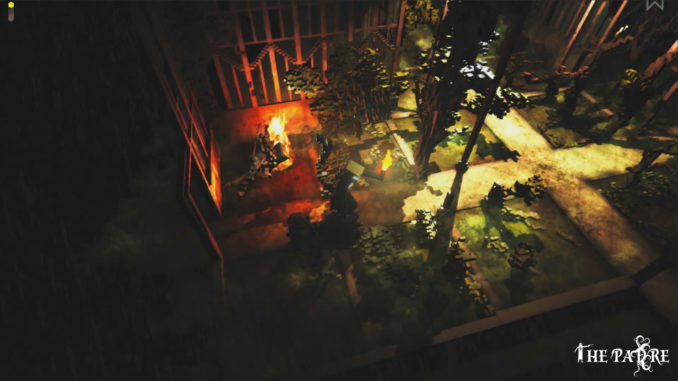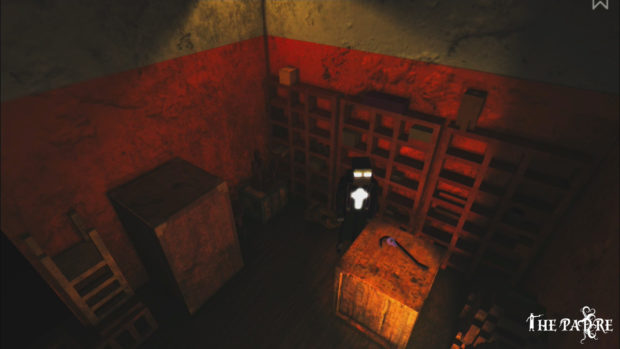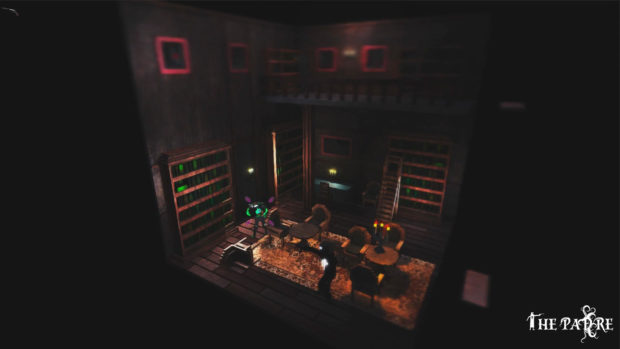
The Padre is a game that could have been ripped straight from the early nineties. A time when point-and-click horror games were common. The Padre pays homage to those games of times past by being faithful to its inspirations, for better or for worse. While the game is full of clever references, fantastic atmosphere, and interesting characters; game-breaking bugs, dreadful combat, and aggravating mechanics hold the game back from realizing its full potential.
One of the most critical aspects to nail in a survival horror game is the puzzles. In the case of The Padre, puzzles are by far the best aspect of the game. They are consistently well thought out, and there is excellent variety among them. Even the hardest problems in the game were solvable as long as you took your time and thought critically. The most glaring issue with puzzles wasn’t due to poor design. Due to the art style, and the game being somewhat dark, finding key items to make progression would sometimes take hours, blending in a little bit too well with the environment around it.
Another major issue with The Padre is that the game is very buggy. At one point in ReviewFix’s playthrough, a bug occurred after acquiring an item that made it impossible to move. The only way to fix the issue was to close the game and reload the file. The movement was also buggy, with the player character often going in the complete opposite direction that was intended, or sometimes getting caught on geometry while running from enemies causing unnecessary deaths.
 One of the worst offenders though was the combat. It is a common argument that combat in survival horror games is done poorly to make the player feel weak, and to keep them afraid of enemies. But there is a difference between removing a sense of power from the player, and making inconsistent, poorly designed combat. Sometimes attacks just don’t come out, even though there is a clear attack prompt, leaving you open to punishment by an angry zombie. There is also a blocking mechanic in the game that is better left neglected, thanks to inconsistent hitboxes. In a game that isn’t supposed to have a focus on fighting, you do a lot of fighting. And it seriously detracts from the other aspects of the game.
One of the worst offenders though was the combat. It is a common argument that combat in survival horror games is done poorly to make the player feel weak, and to keep them afraid of enemies. But there is a difference between removing a sense of power from the player, and making inconsistent, poorly designed combat. Sometimes attacks just don’t come out, even though there is a clear attack prompt, leaving you open to punishment by an angry zombie. There is also a blocking mechanic in the game that is better left neglected, thanks to inconsistent hitboxes. In a game that isn’t supposed to have a focus on fighting, you do a lot of fighting. And it seriously detracts from the other aspects of the game.
While this game does have its saving graces, it features a significant taboo in survival horror. The ever-looming threat of completely taking away all of the progression you’ve made. When you die in the game, you get resurrected through the use of angel tears. These tears get collected in a vial. If the bottle fills up, your game is over. Literally. You lose all progress, no matter how far into the game you’ve gone. This mechanic is made to raise the tension and to increase the consequence of death. But in a game where combat is inconsistent at best, the movement is buggy, incorrectly solving certain puzzles can instantly kill you, and enemies attack with precision and ferocity, threatening the player with the loss of all progression is inexcusable.
Overall, The Padre is a game that could have been great. Unfortunately, the game never truly realizes its full potential. The atmosphere, soundtrack, and characters are all par none. But terrible combat and inexcusable design flaws hold The Padre back from honoring games like Alone in the Dark, Clock Tower and System Shock in the way they truly deserve.
The Good:
Excellently Crafted Puzzles: The best part of The Padre, puzzles treat the player like someone who can think critically, which is rare in today’s day and age.
The Perfect Ambiance: Eerie background music, excellent sound design, and a creepy atmosphere all add up to make the mansion feel alive and oppressive.
 The Bad:
The Bad:
Terrible Combat: Even if a game isn’t supposed to focus on combat, that doesn’t mean it should be un-fun. Inconsistent hitboxes, dealing with multiple, highly aggressive enemies, and a broken blocking mechanic make fighting unenjoyable at best.
Permanent Loss of Progression: The angel tears, in theory, should add tension and increase the consequence of death. But in practice, makes players not want to play the game. The threat of death is constant in the Padre, and the end game throws an endless amount of enemies at you. If a player is about to beat the game and is sent right back to the beginning, it would be understandable if they did not want to play anymore.


Leave a Reply